Courseulles Sur Mer, Normandy, France
The Juno Beach Centre
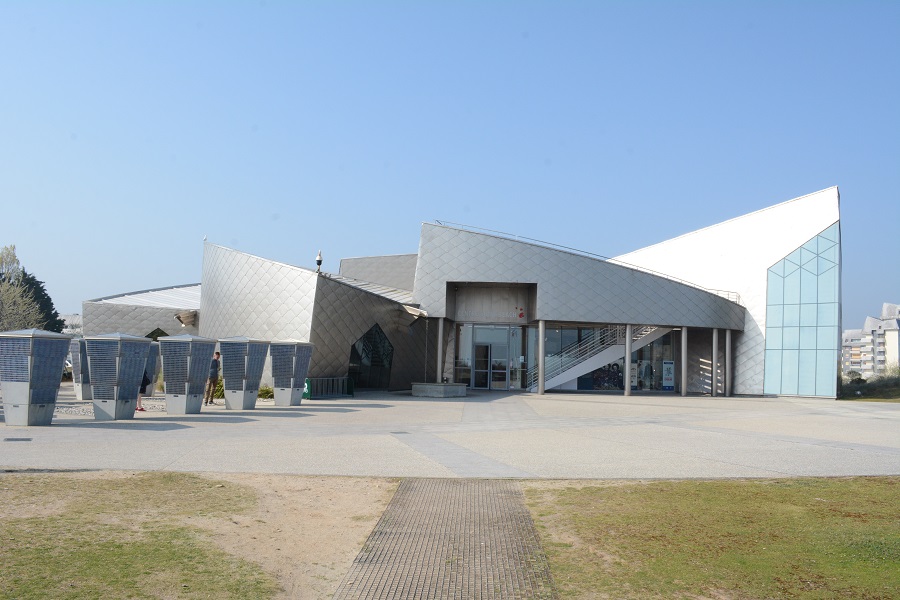
The Juno Beach Centre is a museum dedicated to Canadian participation in the D-Day invasion of Europe on 6 June 1944.
After you enter the museum and purchase your ticket, you wait a few minutes before you can enter. Entrance is made in small groups of people, not individually. When your group enters, you will be in a simulated landing craft. Films on three sides simulate what the soldiers saw as they were approaching Juno Beach on D-Day. Finally, as your landing craft hits the beach, the front door opens, and you enter the museum.
The museum depicts the information leading up to the Second World War, the history of Canadian participation in the D-Day invasion, and life in Canada in the 1930s. An excellent museum.
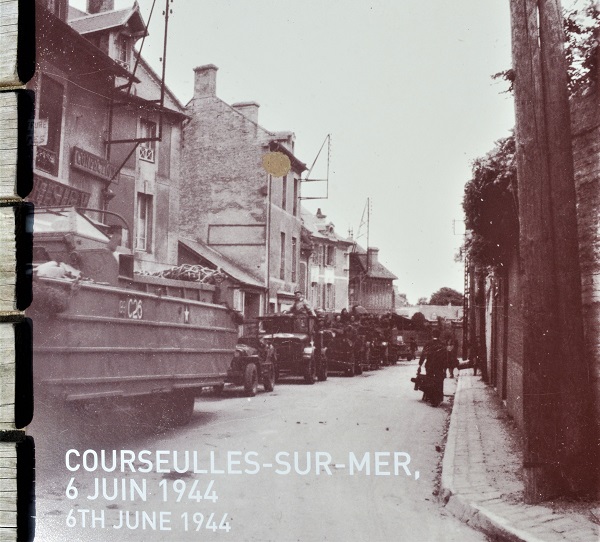
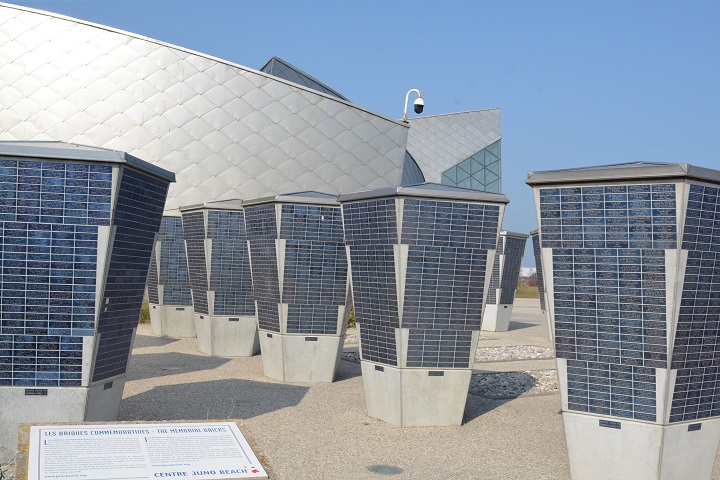

A few of the items in the museum: A mine detector, a military motorcycle, and uniforms (click the firs photo to enlarge, then click again to proceed to the next image).

First of all, just after midnight on D-Day, paratroopers were dropped behind enemy lines to destroy bridges and capture roads.
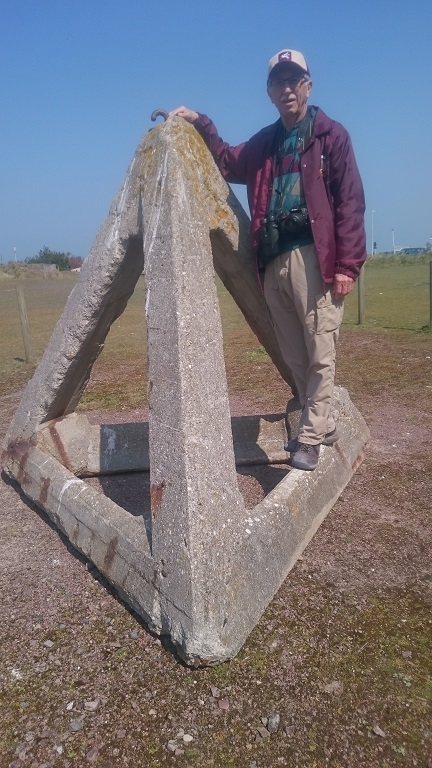
The Bunkers
In addition to the museum, you can take a guided tour of a couple of nearby German bunkers. Very interesting.
Especially relevant to your orientation is that the bunkers were right at the edge of the beach during the war. But over the past 75 years, the wind has blown sand onto the area and plants have grown up and the bunkers are now a fair distance from the water. Consequently, a person in the turret today would not be able to see the beach due to the buildup of sand and plants. (Click photos to enlarge).
Practical Information: Tours of the bunkers in English are at 10:30 and 2:30. However, tours in French are throughout the day except during the English tours. We arrived at the museum at 10:30 a.m. After touring the museum, we went into town for lunch and returned for the bunker tour. To get from town to the museum, you must cross two bridges over canals. The bridges open to allow boats to pass. Suppose the bridge is open when you arrive. In that case, you must wait to allow boat traffic to pass (The time that the bridge is inaccessible varies. However, if you are driving, it is possible to go around with another bridge further from the museum). Touring the museum and the bunkers for two people costs 11 Euros (a bit cheaper than buying the tickets separately.) (Prices and times are subject to change).
The Beach
Walking on the beach that the Canadians crossed on D-day gave me a strange feeling. As a result, it felt like being in a cathedral or some sacred place. One of the reasons I came in April was because I did not want to see the beach in August when it is filled with tourists. The photo on the right is a makeshift memorial on the beach near the Juno Centre. (click to enlarge).
The Tank
This Canadian Sherman tank was waterproof and fitted with rubber tubes to keep it afloat. It was driven by two propellers at the back when in the water. Yet the Germans managed to sink it on D-day as it was coming ashore. Twenty-seven years later, it was dragged out of the ocean and cleaned up and put on display in the town. The side of the tank is covered in plaques placed there by the regiments and corps of the Canadian Army that were involved in D-day to commemorate their killed members. (click photos to enlarge).
History
The Numbers
D-Day (6 June 1944) was when the allied forces invaded Nazi-occupied Europe.
The invasion force involved the combined armies of the United States, Great Britain and Canada. It was the largest invasion in military history. The allies attacked with 39 divisions (22 U.S. 12 UK, 3 Canadian, 1 Polish and 1 French). A Division consists of between 10,000 and 18,000 soldiers. They hit the beaches at 0730 with 5,000 ships. About 107,000 soldiers and 7,000 vehicles went ashore on the first day, with 875,000 men by the end of June.
Airborne forces parachuted in before the invasion in the vicinity of the city of Caen. This force consisted of three Airborne Divisions. The 1st Canadian Para Battalion was part of the 6th British Airborne Division. The main task of the paratroopers was to capture bridges and roads for the use of the Allied forces and destroy other bridges to deny the enemy of their use. Unfortunately, due to landing behind enemy lines, they suffered heavy casualties.
In addition, about 195,700 sailors crewed the 5,000 ships, including 10,000 Canadians with 110 ships.
U.S., British and Canadian Air Forces were also involved. First of all, they laid down a bombardment along the coast, dropping 2,200 bombs.
Juno Beach
The forces attacked five areas along the coast of Normandy, France. These areas were called Utah and Omaha Beach for the Americans, Gold and Sword for the British and Juno for the Canadians. This represented an 80 km stretch of coastline. All of the beaches were connected into one by 12 June.
Juno beach was more difficult than most of the other beaches. The bombing had not destroyed the German defences. Beach obstacles kept most of the tanks from landing. In spite of this, by nightfall, the Canadians had advanced further inland than any other Allied troops.
The Defences
The German forces opposite the Canadians were the 716th Infantry Division and the 12th SS Panzer Division Hitler Jugend, led by NCOs and officers of the Waffen SS, with the 21st Panzer Division in reserve at Caen. The Germans at Juno Beach had the best defences of any of the invasion beaches, with bunkers every 900 metres with 75mm guns surrounded by barbed wire and mines. Also, beach obstacles included mines, wooden stakes, metal tripods and barbed wire. On D-Day, the cost to Canada was 359 killed plus another 705 soldiers wounded or missing.
Notes: The codename for the invasion was “Operation Neptune”.
Link to the website of the Juno Beach Centre
Practical Information – Getting there. There is more than one train station in Paris. First, you need to go to Gare (train station) St Lazare. From there, take the train to the city of Caen. Then you need to take a taxi to Place Courtonne where you get bus #3 to Courseulles Sur Mer.
If you are coming from England, you can get a ferry from Poole to Brittany and then a bus.
The town of Courseulles Sur Mer is a lovely little town to visit. But don’t plan on eating early. Restaurants are only open for a few hours per day in the evening. However, there are small snack places and bars available during the day. We did not go to any restaurants. However, we had a delicious supper with bread, ham, salad and wine from the grocery store.
First, go to the tourist office and ask for the “Tourist Map”. It is an excellent map of the whole area, not only Courseulles Sur Mer. Furthermore, information about all the interesting places to visit is on the back. They also have town maps showing the bus stops to go to Caen and bus schedules.
Bernieres Sur Mer
Juno Beach – a definition. Juno Beach is not a beach. Nor is it any place on a map of France. It was simply a name representing a stretch of coastline assigned to the Canadians for the D-Day invasion. It was an 8 km stretch of coast that included several beaches and towns. The same applies to the other beaches (Gold, Sword, Utah and Omaha).
We walked from Courseulles Sur Mer to Bernieres Sur Mer, the next town to the east. There is a distance of 3 km between these two towns.
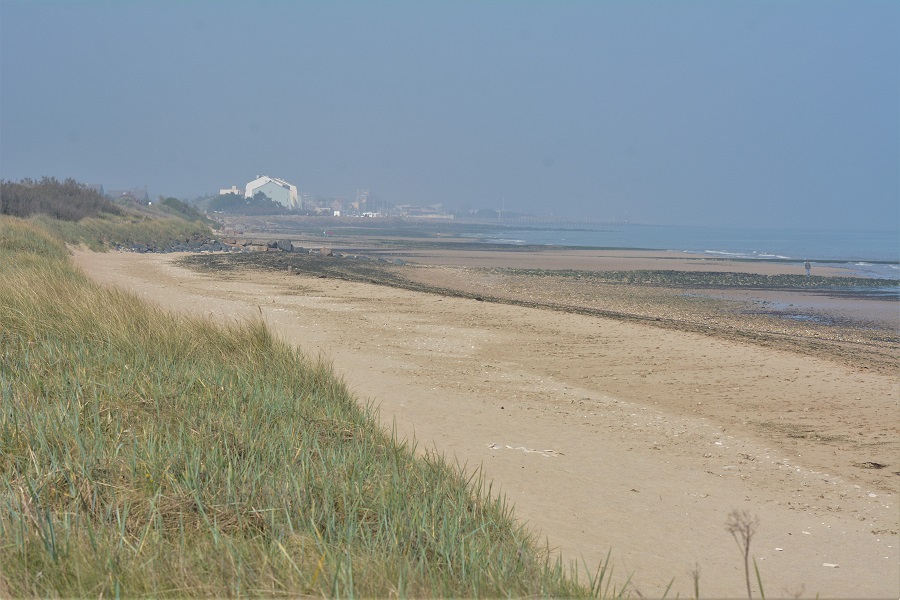
The above photo is a picture of Juno Beach taken from Bernieres Sur Mer with Courseulles Sur Mer in the background. The distance is three km. So this will give you some idea of the total length of Juno Beach, which was eight km in length and included several towns and beaches.
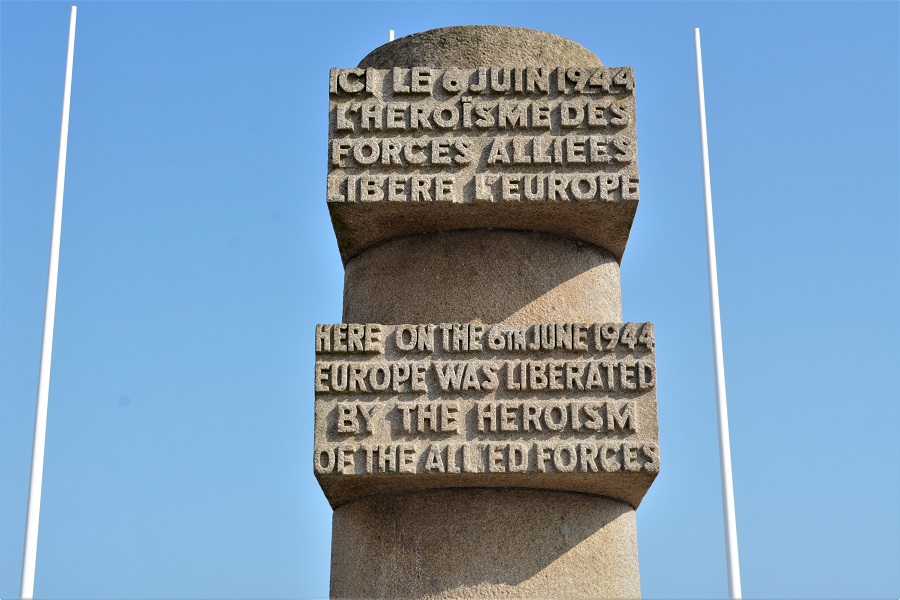
Canada House
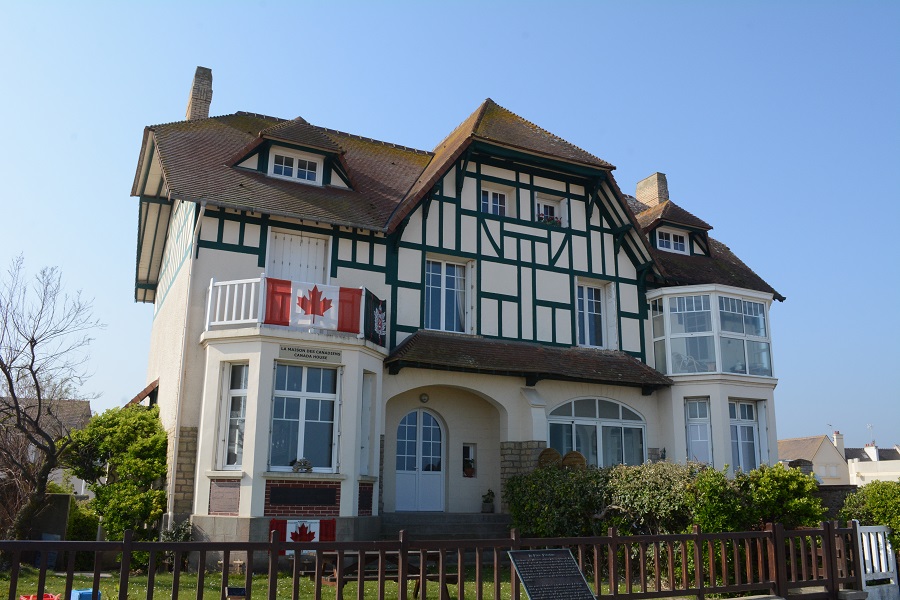

This lovely house is located on the seafront in the centre of Bernieres Sur Mer. It was the first building in Europe to be captured and liberated by the Canadians (The Queen’s Own Rifles from Toronto).
As you can tell by the Canadian flag on the building, the people here love Canadians. The inside of the house is like a museum, but it is a private house and not a museum open to the public. However, sometimes the family that lives here, if they encounter Canadians in front of the house, will invite them to chat and view their artefacts. The photo on the right shows the damage to the home that occurred on D-Day. Between the coast and this house, 100 soldiers of the Queen’s Own Rifles were killed by Germans in and around the house. The QOR had 143 casualties, which was the highest of any Canadian Regiment on D-Day.
The Church, Bernieres sur Mer

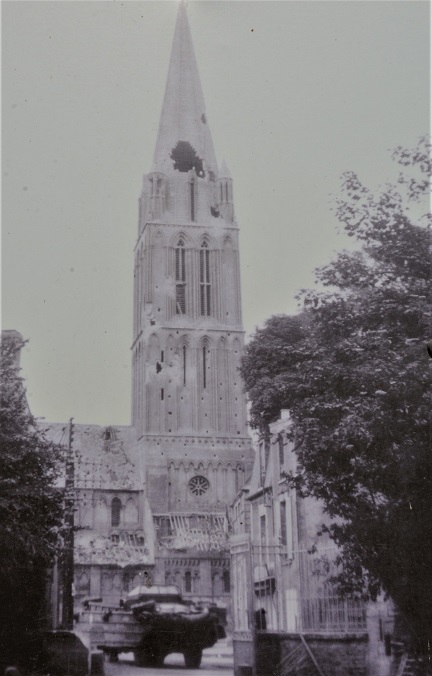
The church in Bernieres Sur Mer as it is today (above) and a photo showing the damage that it sustained during the invasion (left). Due to their height and excellent views, the Germans often used church towers as observation posts and sniper positions.
Memorials
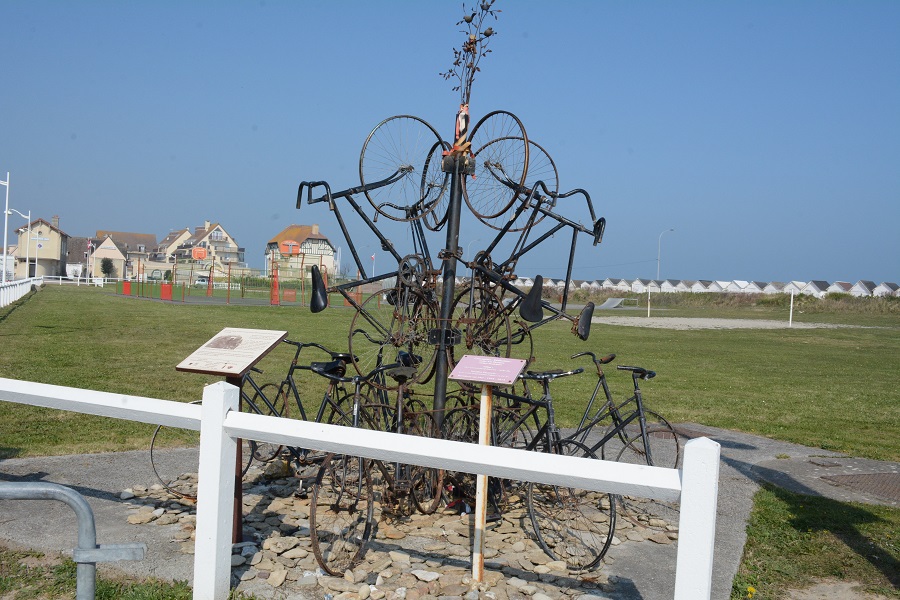
The Canadians attacked the beaches of Normandy on foot, in tanks and with several other kinds of vehicles. In addition, some soldiers went into battle on bicycles. For this reason, some of these old Canadian military bicycles have been made into a memorial in Bernieres Sur Mer.
.
Another makeshift memorial. This is the second one I have seen. The first one was on the beach at Courseulles Sur Mer. However, they are not made by the government or any special group. They were simply created by the people of the town and visitors. This one has a long row of little wooden crosses. Each cross bears the name of a Canadian Regiment. In addition, people have placed flowers, Canadian flags and poppies between the crosses. (click photos to enlarge).
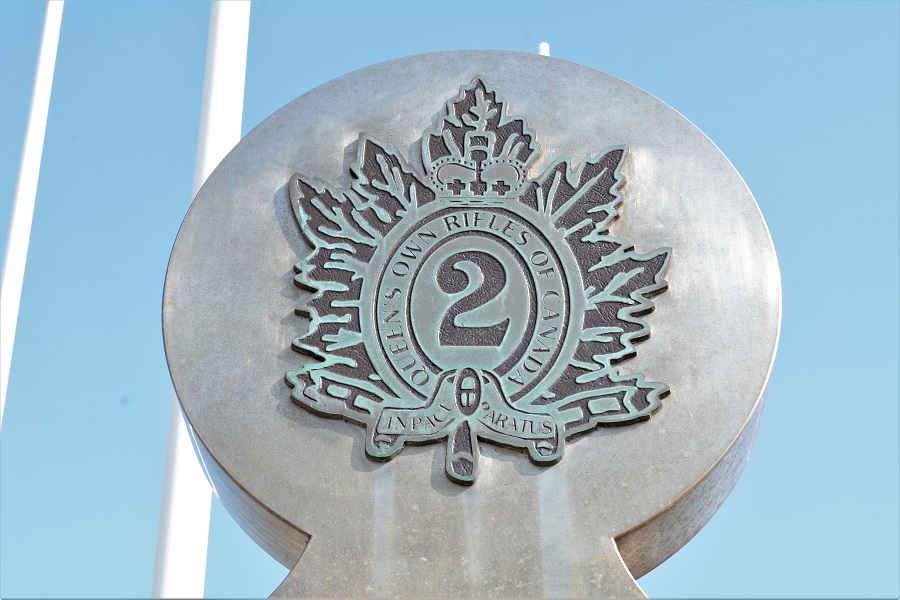
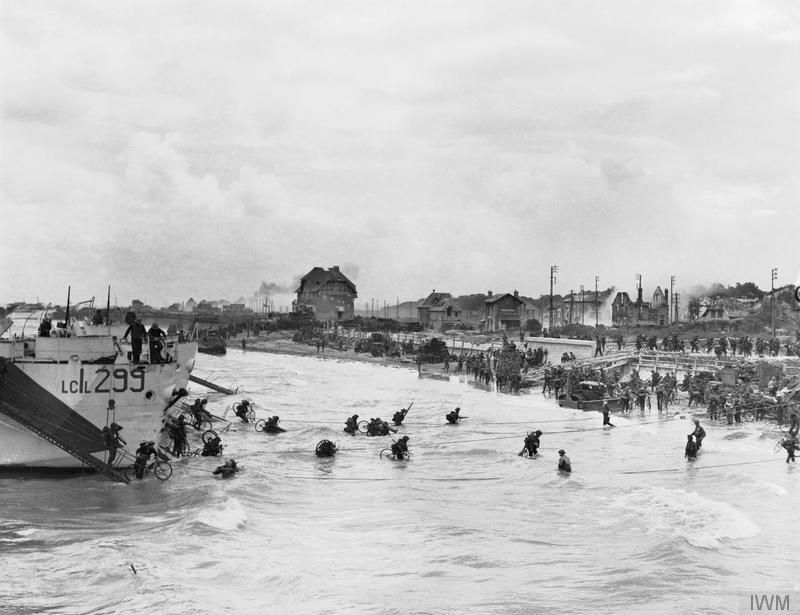
Beny Sur Mer Canadian War Cemetery
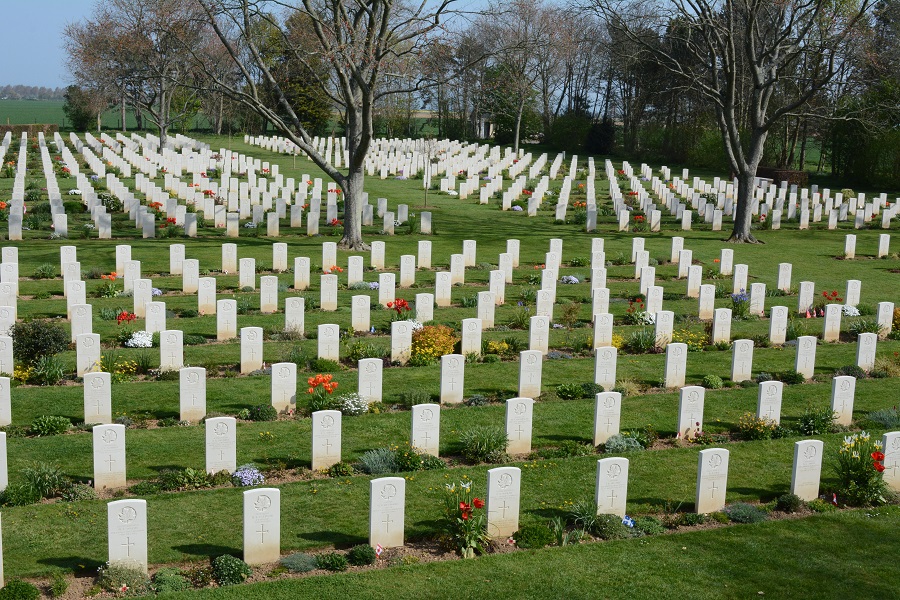
The Beny Sur Mer Canadian War Cemetery contains the graves of more than 2,000 Canadians who were killed on D-Day or in the following week.
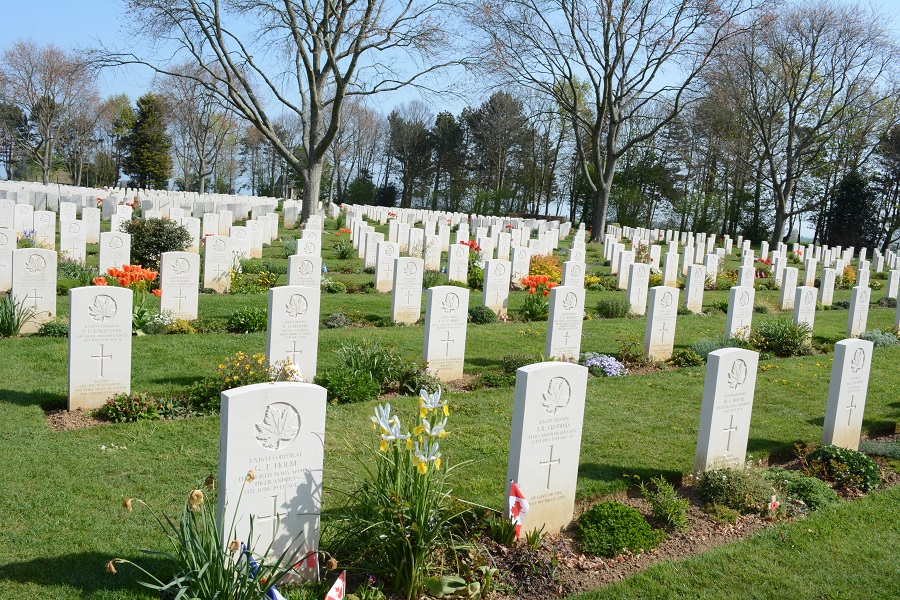
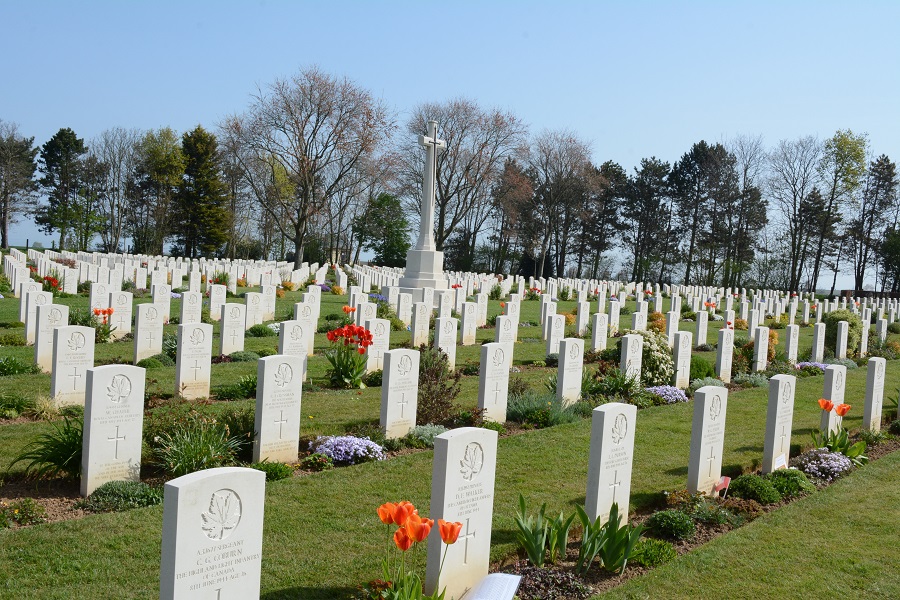
Click on the first tombstone and scroll through them.
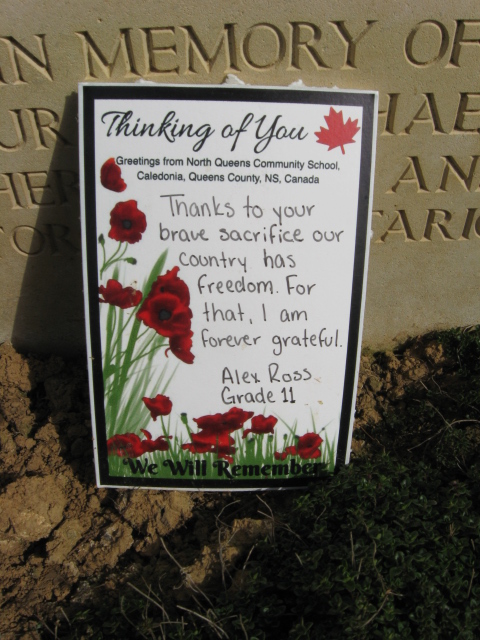
Many items have been put on the graves by the local people. These include flowers, candles, poppies, flags and many other things. I saw one grave with a little bottle of sand from the beach. Some graves have letters from school children. It is very touching that the local people care about this graveyard. I thank them.
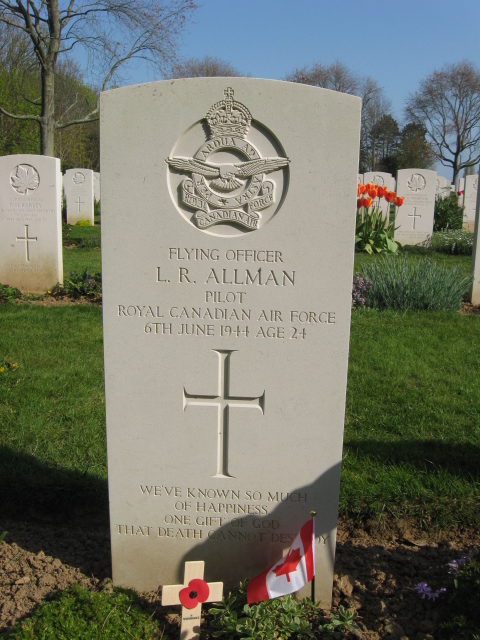
The cemetery contains the grave of 15 members of the Royal Canadian Air Force whose aircraft were shot down over the beaches of Normandy.
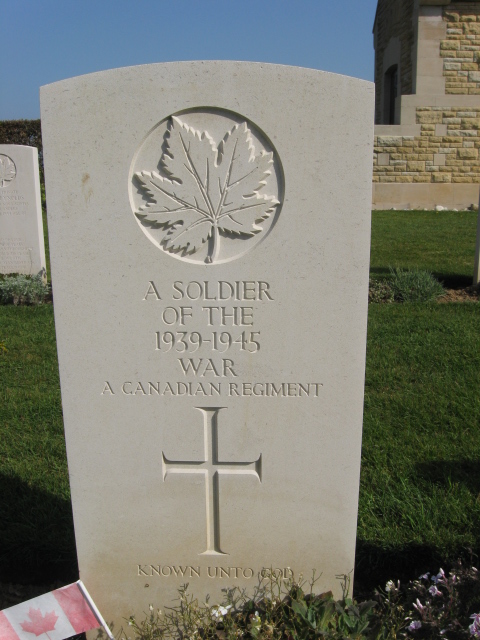
The cemetery contains the bodies of 19 Canadian soldiers whose identity remains unknown. Because sometimes the bodies were so severely damaged, it was not possible to identify them.
Practical information – getting there. Despite its name, the Beny Sur Mer cemetery is not near the town of Beny Sur Mer. It is one km east of the town of Riviers, which is the next town south of Courseulles Sur Mer. Beny Sur Mer is further south.
There are nine sets of brothers among the 2.049 graves at Beny Sur Mer. There are also three British soldiers and one French. The Frenchman was a resistance fighter who joined the Canadians during the invasion and died along with them.
The Battle of Normandy
Many people think that after D-Day, the task of moving inland was not so difficult. However, this is not correct. Indeed, the Allies lost half as many men on the second day as they lost on D-Day.
Today the drive from Courseulles Sur Mer to Caen is a pleasant 40-minute drive with no one shooting at you. It was a different story for the Canadians in 1944. They had to fight every step of the way. For this reason, it took them eight weeks. Finally, the Canadians captured the city of Caen on 21 July.
The Normandy campaign cost the Germans 450,000 men killed, wounded and taken prisoner. The Allies lost 210,000 dead, wounded and prisoner.
Canadian War Cemetery Brettville Sur Laize
The Canadian War Cemetery for the Battle of Normandy is located about 25 km south of Caen. It is similar to the one at Beny Sur Mer, but it is larger.
This cemetery contains the graves of 2,793 Canadians, including 79 from the Royal Canadian Air Force and 91 whose identity is unknown.
Practical Information – Getting there. The cemetery is located south of Caen near the village of Cintheaux. Like Beny Sur Mer, the cemetery is not named after the closest town, which I found strange. Getting there is difficult. You will need to set aside a whole day for it unless you have a car. There are only a few buses per day, and none of them goes in the morning. They leave from the train station. You will have to check at the train station or the tourist office in the town centre for times.
After the Battle of Normandy
After the Battle of Normandy and the capture of the city of Caen, the Allied turned east toward Germany.
Notes: The codename for the Battle of Normandy was “Operation Overlord”. Movies about D-day and the Battle of Normandy: “The Longest Day” and “Saving Private Ryan”.

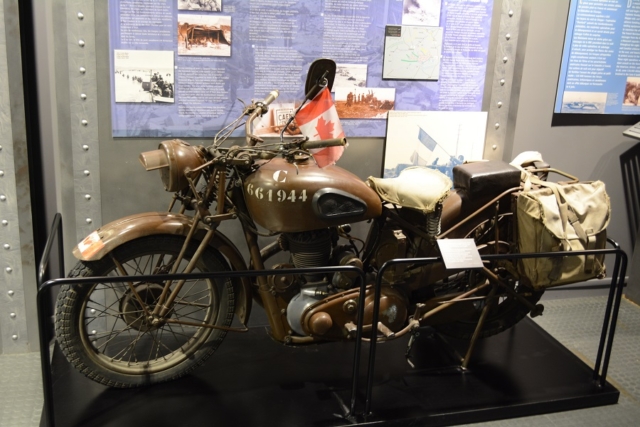

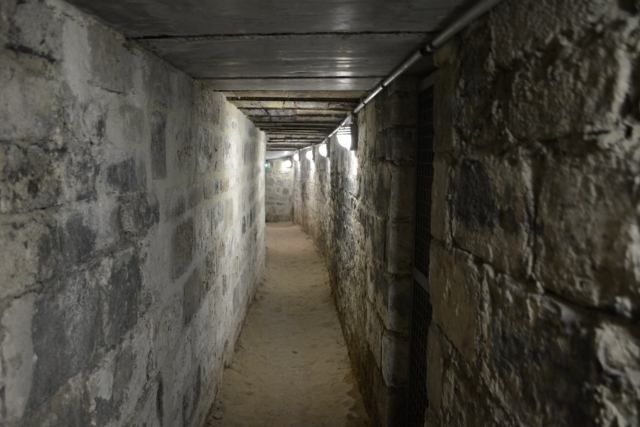
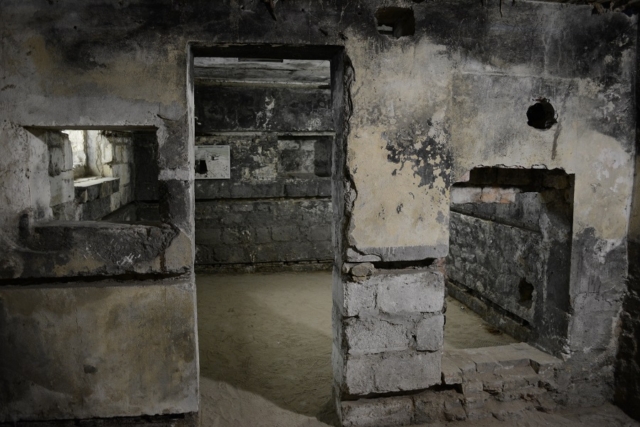
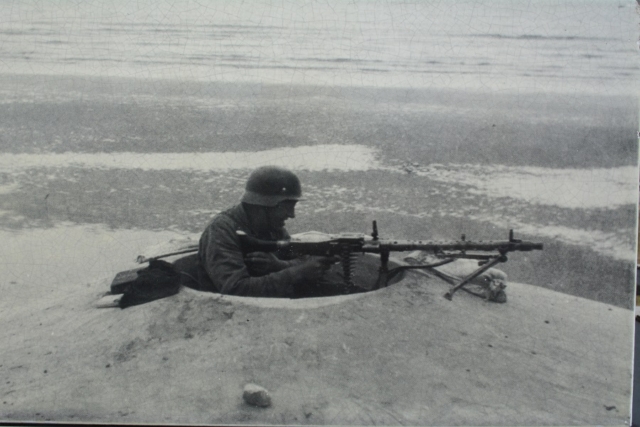

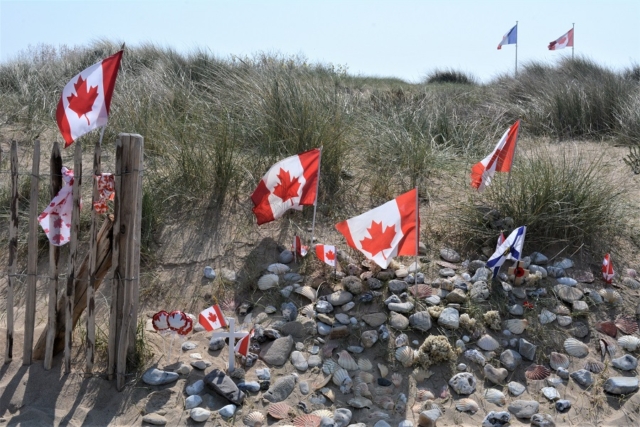
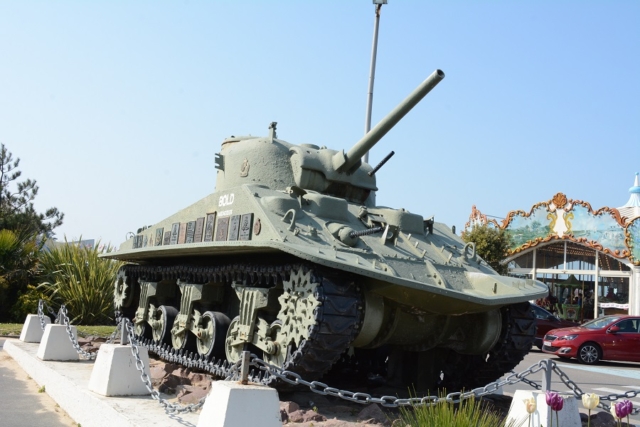
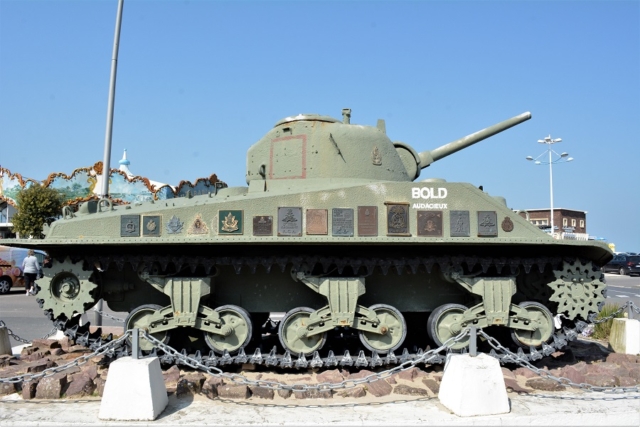
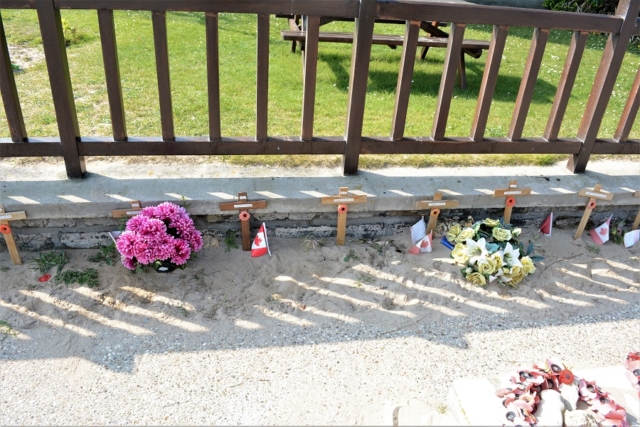
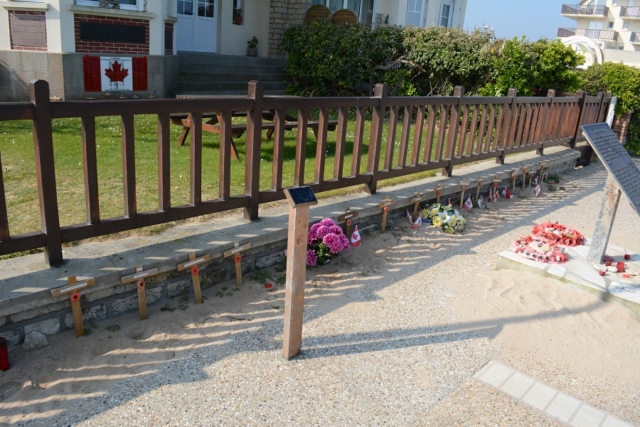

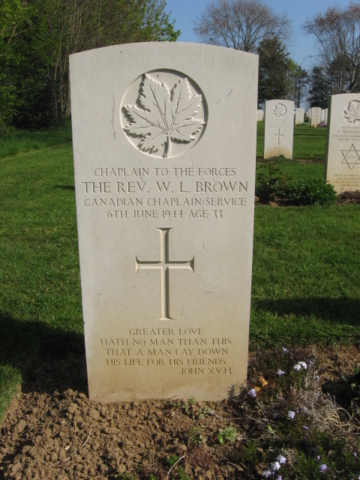

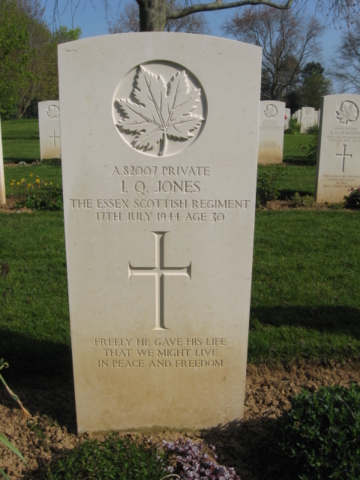

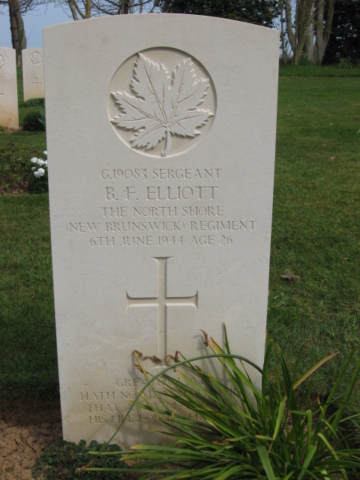
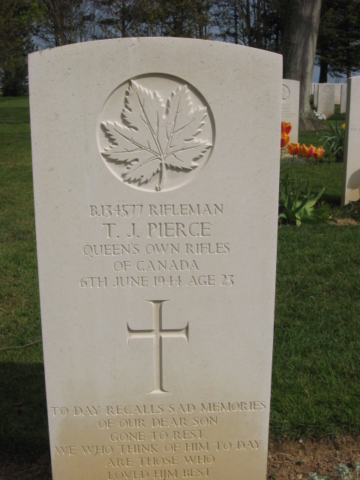
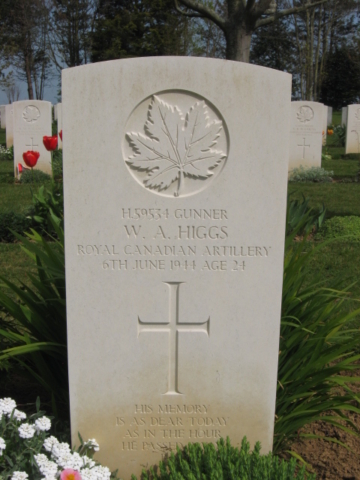
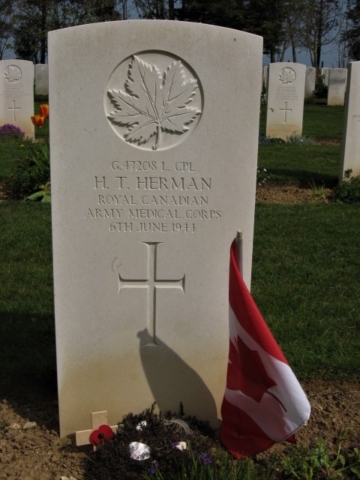

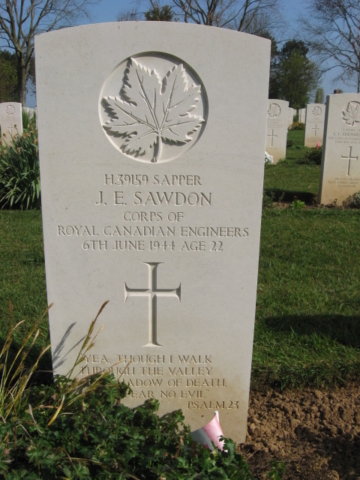
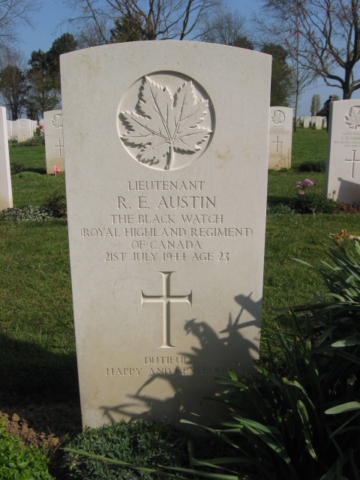




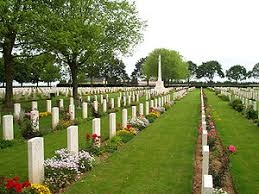
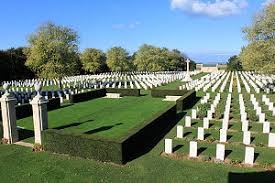
Dear Tom,
Hope you were able to find some hot soup in Groesbeek.
Now that I see your website I realise I could have shown you some places just around the corner of the Groesbeek Canadian War Cemetery that would have interested you.
Have a safe trip.
We did find a nice restaurant in Groesbeek. Thank you very much for the ride on a very cold day. When I write about Groesbeek I will put a link to your page. Our next stop is Arnhem.
Hey Tom, great write up! Starting the museum tour by simulating landing sounds amazing!
Just wondering, these same bunkers would be useful if somehow Normandy became a theater of war again or are they obsolete by modern standards?
If WW2-like scenario would happen again, would invading through Normandy still a good option or technology rendered useless?
Thanks Airan. The bunkers are obsolete. Would not be useful in a future war. If there is ever a future war, and I hope not, I don’t think it would take place here. More likely in the Middle East or eastern Europe.
Looking forward to it
Muy interesante visitas, espero tu información..